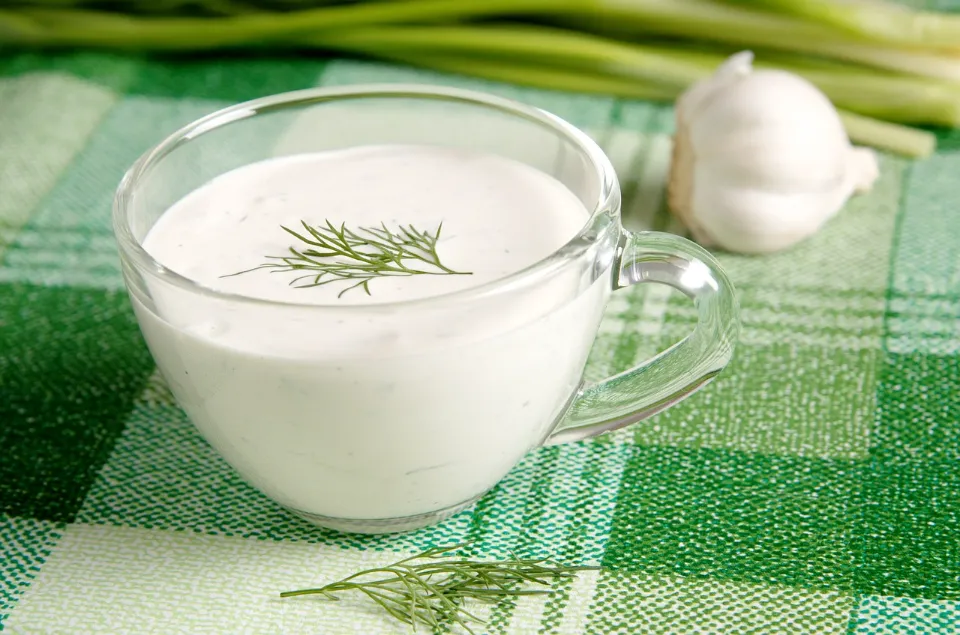A microwave is one of the most popular appliances in the kitchen, but we don’t know much about them. The question of how hot a microwave can get is among the most frequently asked. To provide you with an answer to this query, we have conducted the necessary research.
In order to heat food, a microwave does not get hot inside. The moisture in food is heated as a result of the electromagnetic waves that are instead produced. Up to 248 degrees Fahrenheit can be reached inside a microwave to heat food.
Now that we’ve given you an answer, you may have other questions about this appliance. You might want to know more about how microwaves are made. What a microwave can cook is another thing you might be interested in. To find out more, continue reading.
How Hot Does It Get in a Microwave?

Answering this query is challenging. Similar to a conventional oven, a microwave oven does not get hot. Conventional ovens measure their temperature in degrees Fahrenheit, while a microwave oven measures its temperature in wattage.
The power consumption of your microwave must be understood. Your microwave’s power output is comparable to an ordinary oven’s temperature. More energy will be put into the food and it will cook more quickly in a microwave oven with a higher wattage.
Most microwaves come in wattages between 700 – 1200 watts. You can usually choose the microwave’s wattage. The wattage of the average microwave is unknown to many people. It’s comparable to not knowing how hot a microwave gets to operate if you don’t know the wattage. Knowing this information is crucial.
Also Read: How Does A Microwave Oven Work – Complete Guide to Use It in 2023
The wattage of your microwave can be found in the manual, on the box, or elsewhere on the appliance. It is typically written on the microwave’s bottom, back, or door.
The 700 watt microwave is what is assumed in microwave cooking instructions. For every 100 extra watts your microwave has above the typical 700, you should shorten the cooking time by 10%.
For instance, if your microwave has 1,000 watts, the cooking time would be reduced by 30%.
Consider the scenario of wanting to microwave-cook a potato. At 700 watts, a five-ounce small potato will cook in two minutes. At 700 watts, it will take four minutes to cook a larger potato, weighing about 12 ounces. The small potato will, however, finish cooking in just one minute and 15 seconds if you cook it at 1000 watts.
As you can see, a microwave’s wattage greatly affects how hot something can become inside.
How Hot Does a Microwave Get in 30 Seconds?
The temperature of 1000 milliliters (mL) (one liter) of tap water that starts at ten (10) degrees Celsius (C) (50 degrees Fahrenheit (F)) will increase to seventeen (16) degrees Celsius (C) (62.88 degrees F) in thirty (30) seconds of 100% MW power run time in a microwave oven with a 1000 Watts microwave (MW) cooking power.
So, a good general “rule of thumb” for a 1000 Watt rated cooking power MW oven is the temperature of the food you are cooking/heating or the liquid (assuming the liquid is water-based) you are heating will rise about 6.5 degrees F for every 15 seconds of 100 percent MW power “run time”.
How Hot Does a Microwave Get in 3 Minutes
It is a slow oven—300 to 500 watts—if the water boils in more than 3 minutes. The maximum temperature they’ll reach is around 212°F (100°C)
How Does a Microwave Work?
Understanding how a microwave works will help you know what to anticipate from the device. We’ll discuss this in a bit more detail below:
Highest Temperature
The boiling point of water and all liquids is 212 degrees Fahrenheit. This liquid is currently evaporating. Therefore, this can be considered as typically the highest temperature that a microwave may heat food to internally, though this isn’t exactly accurate.
This is the highest temperature that food can reach in the microwave while still being edible, but a microwave is capable of heating the food to 248 degrees Fahrenheit.
It won’t be edible because the food will have completely lost its moisture.
Electromagnetic Waves
We have started using electromagnetic waves for a variety of purposes in the last century. Electromagnetic waves have transformed our world, from gamma rays in medicine to radio waves in communication.
It has been possible to alter how we prepare food by using these waves.
Since microwaves emit electromagnetic waves, which are invisible light rays, you should be aware of them. Stepping outside on a hot day may have led you to believe that light rays carry heat energy.
However, compared to the visible sun’s rays, these invisible rays are much better heat energy carriers. Fortunately, a body of water won’t reach boiling point when exposed to the sun. However, microwaves will.
They are also more effective at transmitting this heat to water. Even though you can’t see it, most foods contain water.
As soon as the water receives the energy from the waves coming from the microwave, its molecules begin to move quickly, converting this energy into heat. The food internally warms as a result of this.
Even though the densities of different foods are comparable, you may have noticed that some foods take longer to heat in the microwave than others. This is partly caused by the difference in the amount of water in each.
For example, prepared pasta will reheat more quickly than a dry loaf of bread. A higher amount of moisture is present in the prepared pasta. As a result, it warms up more quickly and at a higher temperature.
Wattage and Microwaves
You can regulate how hot food gets in a microwave to cook various types of food if your microwave has multiple wattage settings. Here are some standard wattage settings on microwaves and how they work:
- 700 watts: This is the most common setting on microwaves, and it works for cooking or reheating food
- 1000 watts: This setting works for cooking food quickly
- 1200 watts: This setting works for defrosting frozen food
The wattage of a microwave and the temperature of a regular oven are directly correlated. A 700-watt microwave is equivalent to a 350-degree oven for cooking. An 800-watt microwave is equivalent to a 450-degree oven for cooking. A 900-watt microwave is like cooking something in a 525-degree oven. Finally, a microwave that uses 1100 watts is equivalent to an oven that operates at 625 degrees.
in light of the rise in temperature. Larger microwaves cook food more quickly, which makes sense. Your food will cook more quickly in a microwave oven with a higher wattage. If you don’t want to burn your popcorn, keep this in mind.
There are other useful tips to be aware of when using a microwave to cook, in addition to understanding how hot it can get inside and what wattage your microwave is.
- A microwave will cook food more quickly the more water it contains. Sprinkle some water on something dry that you are warming up to hasten the cooking process.
- A single large portion of food will cook much more slowly than many small portions.
- In a microwave, foods with sugar or fat will cook more quickly.
- The middle part of the microwave is the hottest – and heat distribution in a microwave isn’t uniform. We’ve all noticed hot and cold spots in our microwaved food. Food will heat more uniformly if you remove it from the microwave and stir it.
Does a Microwave Or An Oven Get Hotter?
As we previously stated, microwaves don’t get hot on their own. Neither does the microwave’s interior air. When food has reached 200 degrees inside a microwave, you can open it without worrying that heat is being released into the surrounding space.
On the other hand, ovens do get hot. This is due to the microwave and oven having very different designs.
Despite the fact that the majority of American homes have ovens, many people still may not be aware of how they function. The oven has what is called “heating elements.”
Either gas or electricity is used to power these elements. Today, electric ovens are the norm. A 110-volt wire and a 120-volt wire transport the electricity to the heating elements.
Thermal energy is then produced by the element from this. The food and oven air are heated using this energy. For domestic use, ovens are frequently capable of reaching 500 degrees Fahrenheit.
Nevertheless, a microwave cannot match the temperature that an oven can.
Do Microwaves Shut Down When They Get Too Hot?
You shouldn’t feel any heat emanating from a microwave when it is working normally and being used properly. A microwave can overheat in some circumstances, though.
One instance is when a microwave’s internal components get too hot from a lack of ventilation. Although it may be alluring to save space on the counter, you should make sure that your microwave is not crammed in between other appliances or up against a wall.
Make sure your microwave has 10 centimeters of space on all sides.
Food inside the microwave reaches internal temperatures over the boiling point, which is another cause of overheating. This poses a risk, particularly for powerful microwaves.
If this is a problem, you should reduce the cooking power and cook food for longer. Try to reduce the power to 50% and cook for twice as long in a 1000-watt microwave.
The presence of a thermal cut-out switch in contemporary microwave ovens is a plus. The cut-out switch will activate if the microwave’s sensor detects an elevated temperature.
When the microwave cools, the appliance will reset. This safety feature will stop the microwave from getting damaged or, worse yet, starting a fire.

What Does Your Microwave Do When It Gets Too Hot
Because your microwave can get very hot, it’s important to know what it does if it gets too hot. You’ll want to know what heat does to the microwave and what the microwave does if the heat is too much because your microwave oven heats food by generating energy waves that excite the water molecules and warm the food from the inside out. Despite not bringing the heat of your kitchen into the microwave, microwaves can still overheat if they don’t have safety features that guard against this.
In your manual, which you should have, there should be a list of some of the safety features you can have. If you lost the manual, you can typically download a new one from the manufacturer’s website.
An automatic shut-off feature is one of the safety features that are frequently present in microwaves. This turns off controls when the microwave source’s temperature rises too much. This safeguards the microwave itself and avoids overheating, which may result in a mechanical or electrical malfunction. The microwave stores will reach a specified temperature that causes it to shut down and this feature still allows the timer on the clock to operate. If not, your microwave will turn off to put out any fires, which is a useful feature to have in your kitchen.
Additionally, food may still be overheated in your microwave. Food that is stuck in the microwave will cause the sensors to detect overheating from boiling water, which will then cause an automatic shutoff. Always be aware of the heat settings on your microwave, and handle anything you take out carefully.
Additionally crucial is the microwave fan’s role in cooling the microwave source, which generates the heat required to cook food. When the microwave turns on, you can hear this sound. The microwave might not function if the fan fails. This is a safety measure to prevent it from overheating and catching fire. If this fan breaks down, you might need to buy a new microwave because it is not a problem that you can fix on your own.
Now that you are aware of how hot your microwave can get, depending on its wattage, These days, you ought to cook your food more effectively and burn less stuff. As long as your microwave is functional, it can take the necessary safety measures to prevent overheating and potential damage to your home.
In Conclusion
We frequently consider microwave ovens to be a given convenience. We rarely spend the time learning how it operates, just like with many contemporary appliances. However, you were curious about how warm a microwave could get.
Our research found that microwaves themselves do not rise in temperature. However, the internal temperature of the food can rise to 248 degrees Fahrenheit when it is heated.
We talked about how raising food’s internal temperature is not how the microwave heats food. To raise the temperature of the food’s water content, it uses electromagnetic waves instead.
FAQs
Can Radiation Or Microwaves Linger in Food?
No, this is a persistent urban myth similar to the one that gamma rays cause mutations despite a long time since the scientific community came to a consensus. According to the World Health Organization, microwave ovens behave similarly to light bulbs in that they completely stop emitting electromagnetic radiation when turned off.
Can You Boil Water in a Microwave and Should You?
The boiling point of water (212 degrees Fahrenheit) is the highest temperature that can be reached when cooking in a microwave, so the answer is yes.) Since electromagnetic waves don’t leave radiation in the water, it’s generally just as safe as any other method of boiling water.
Should a Microwave Get Hot on the Outside?
Although a microwave’s body or external cabinet occasionally gets warm while steaming food, it shouldn’t ever actually get hot because, unlike with conventional cooking, the only thing heated while using a microwave is the food. You should not use your microwave if it becomes hot while operating because this could be an indication of an electrical problem that could be dangerous. Instead, call a repairman if this occurs.








